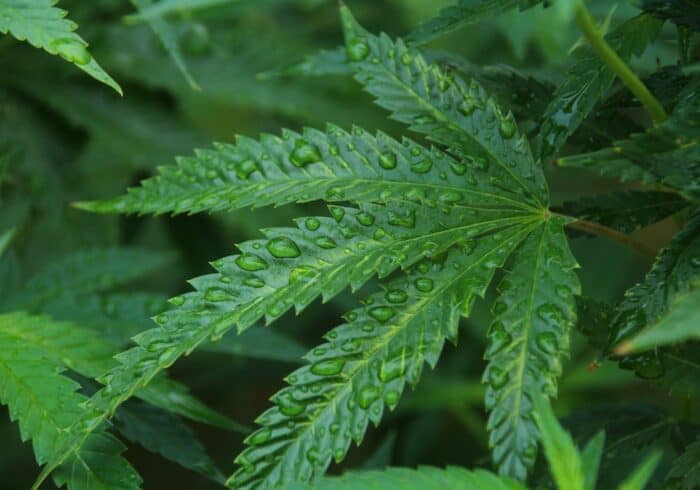Growing Hemp
One of the most frequently asked questions about growing cannabis sativa/hemp is how much water does it take?
While the answer may vary depending on a number of factors, this article will give you a general idea of just how much water industrial hemp needs to grow.
See Also: Does Hemp Take A Lot Of Carbon Out Of The Air?
Does Hemp Need to Be Irrigated?
The amount of water that hemp plants need depends on a number of factors, including the climate, the soil, and the type of hemp being grown.
In general, however, hemp plants require less water than other types of crops.
It’s often said that a hemp plant will need up to 6 gallons of water per week to thrive.
Hemp is a drought-tolerant plant, meaning it can withstand periods of dry weather better than other plants.
This is due to the plant’s deep root system, which helps the plant access water from deep in the soil.
Hemp plants also don’t need to be watered as often as other crops.
So, does hemp need to be irrigated?
In rainy climates, it doesn’t necessarily need to be irrigated.
It can require irrigation in dryer climates and the strain of hemp being grown.
See Also: Is Hemp Considered A Drug?
What Is the Best Climate for Growing Hemp?
Hemp is a versatile plant that can be grown in a variety of climates. However, some climates are better suited for growing hemp than others.
Here are some of the growing conditions hemp prefers.
- Hemp prefers a temperate climate with moderate temperatures and plentiful rainfall.
- Hemp does not tolerate extreme heat or cold, it does better in places that have milder winters and cooler summers.
- Hemp grows best in well-drained soils with a pH between 6.0 and 7.5.
- Hemp is relatively tolerant of drought, but it will produce better yields if given adequate moisture.
Taking all of these factors into account, the best climates for growing hemp are likely to be found in temperate regions with moderate temperatures and plentiful rainfall.

Is Hemp a Fast Growing Plant?
No, hemp is not a fast growing plant.
It takes between 60 and 90 days for hemp to mature, which is much longer than most other plants.
This is due to the fact that hemp has a very thick stalk and takes longer to develop.
See Also: Your Guide To Products Made From Hemp Paper
How Long Does It Take for Hemp to Fully Grow?
Cannabis sativa, more commonly known as hemp, is a versatile plant that has been used for centuries in a variety of ways.
More recently, hemp has gained popularity as a source of CBD oil, which is said to offer a number of health benefits.
But how long does it take for hemp to fully grow? The answer may surprise you.
Hemp is actually a very fast-growing plant. In fact, it’s one of the fastest-growing plants in the world. Hemp can grow up to 3 feet in just six weeks!
Of course, the amount of water that hemp needs to grow will vary depending on a number of factors, such as the climate and the soil type.
In general, however, hemp plants need about 20-25 gallons of water per week during the growing season.
So if you’re thinking about growing hemp, don’t let the fear of needing too much water stop you.
With proper care, your hemp plants will thrive and you’ll be able to enjoy all the benefits that this amazing plant has to offer!
See Also: Can Hemp Be Used To Make Environmentally Friendly Plastic?
Does Hemp Regrow After Harvest?
You may have heard that hemp plants can regrow after being harvested. But is this true? And if so, how does it work?
Hemp is a type of Cannabis sativa plant. Like all Cannabis sativa plants, hemp has the ability to regrow after being harvested.
This is because the plant produces a large number of seeds, which contain the necessary genetic information for the plant to regenerate.
The regeneration process begins when the seeds are planted in soil. The seeds germinate and produce new hemp plants.
These new plants will be identical to the parent plant, meaning they will have the same genetic makeup and grow to the same height.
The only difference between the new plants and the parent plant is that they will be smaller in size. This is because they will have not had as much time to grow and develop.
It is important to note that not all hemp plants will regrow after being harvested.
This depends on the variety of hemp plant and how it was grown. Some varieties of hemp are more likely to regrow than others.
Generally speaking, hemp plants that are grown for their fiber are less likely to regrow than those grown for their seeds or flowers.
Have any more questions about how much water hemp needs to grow? Leave a comment below.

